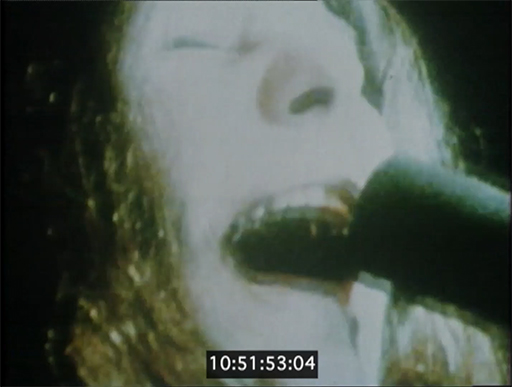5 Joplin’s singing style
Unlike most high-profile contemporary male rock musicians, who tended, like Hendrix, to be guitarists and songwriters, as well as singers, Joplin’s fame rested entirely on her role as singer. As you have learnt, women have – exceptionally – been accorded star status within popular music as singers, while their prowess in other musical fields (including songwriting and instrumental performance) has often been downplayed. Unlike other white female singers of her generation, such as Joni Mitchell, who often took a folk-influenced approach to vocals, Joplin’s style was heavily influenced by older black blues singers, such as Ma Rainey (1886-1939) and Bessie Smith (1894-1937), and her contemporaries, Aretha Franklin (1942-2018) and Otis Redding (1941-1967). Intriguingly, despite performing one’s own material being regarded as a key component of the ‘authentic’ rock music experience, Joplin’s best-known recordings, such as ‘Ball and Chain’, ‘Me and Bobby McGee’, and ‘Piece of My Heart’, are all covers.
Activity 2
David Brackett has asserted that ‘Joplin conveys an emotionalism more extreme than that of her models, giving the illusion of abandoning any vestiges of vocal control, especially in live performances’ (Brackett, 2001). Watch this footage of Joplin performing ‘Ball and Chain’ with Big Brother & the Holding Company at the Monterey Park Pop Festival in 1967 with this description of her vocal style in mind. Does Brackett’s description adequately reflect this performance? Although ‘Ball and Chain’ was originally written by Big Mama Thornton (1926-1984), it was Big Brother & the Holding Company’s cover version which became well known.

Transcript: Video 1 Janis Joplin: Ball and chain
MUSIC - JANIS JOPLIN, "BALL AND CHAIN"
Discussion
This performance by Joplin does convey the ‘extreme emotionalism’ which Brackett identifies. With her eyes closed at several points, she appears to be totally absorbed by her performance. Although at points it does sound as though her singing almost becomes screaming – which is what Brackett means by ‘abandoning vocal control’ – it could be argued that this is motivated by a desire to express the song that she is singing as fully as possible, rather than a result of poor technique. Other moments in the performance – particularly the range and shifts of the dynamics (how loud or soft she is singing) and her articulation of the words – sound very controlled. Her performance style seems driven by a desire to connect with her audience and communicate a raw intensity of expression as directly as possible. The wider movements of her body (the kicks with her legs and gestures with her arms) and even the way she uses the microphone (holding it and singing as closely to it as possible) all seem to be part of this.
